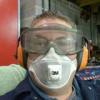Hello all.
I've had a nagging question regarding twin carburation and the benefit thereof.
From what I've read here and there, there is little to no benefit on peak power but that twins tend to deliver better torque lower down on the rev range, giving better drivebility.
In my edition of Vizards book there seems to be a misprint. I've got the second edition reprint but on page 119 he refers to Fig 7.2 that I can't seem to find anywhere in the book. Regardless he explains that in his tests there was no difference in the 2500-4000rpm range. And goes on to say that "the power production of twin SUs over a big single, is hardly worth the hassle of having to have that extra carb."
I suppose my first question should be, is this book still relevant or is it outdated?
His views would lead me to believe that indeed there is no difference in peak power, but it would also disprove the idea that twin carburation offers better torque lower down on the rev range.
I can't seem to find any dyno results with similar enough setups showing twin carbs over a bigger single carb. But then the persons that I have seen mentioning this higher torque on the lower range definitely seem to know what they're talking about.
Any thoughts of where I might find some evidence of this lower range torque? Or even if someone has first hand experience to share.
Thanks!


















